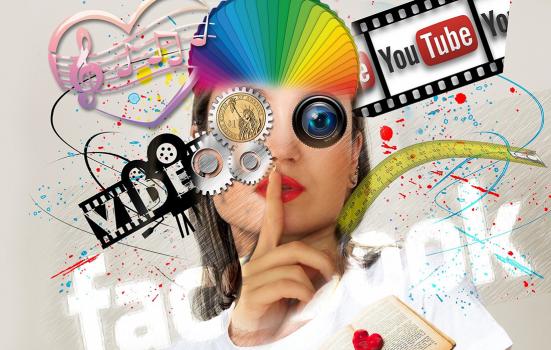R&D funding for artists is hard to come by, but Hannah Grannemann and Amy Whitaker believe emerging artist-centric sources of finance will offer important new opportunities that could radically shift the economics.

Gerd Altmann from Pixabay
Artists are resourceful in getting what they need to make their work. Some projects do not cost vast sums, but the sums are vast when you don’t have them. Necessity may be the mother of invention and creativity may come from constraints. But at what cost?
Artists spend as much or more time on getting the money to create their art as actually doing it. In most cases, they self-fund creation of their work from retained earnings from previous sales or from the income they make from other jobs. There are exceptions such as commissions, which are rare, and individual artists’ grants and awards, which are usually far fewer in number than worthy applicants and likely to go to those with reputational heft. In another era, some dealers paid their artists retainers. Today, most artists don’t receive payment for their work until it’s purchased, performed or licensed.
The R&D Problem
Some argue that, as a special category of entrepreneur, artists are not alone in facing challenges before they reach a certain level of success, or at least stability. A cursory glance through the TED YouTube channel would offer countless examples of people across disciplines who didn’t have start-up or R&D funds for their new ventures, yet still found their way.
However, the arts are different. The difficulty of artists getting R&D money is a stubborn, structural problem that keeps the field operating at a lower level of productivity than it could. As self-employed workers, artists don’t get investment from the R&D funds that companies use to create new products that will help them grow. For artists or performers, there is no ‘innovation department’ to seed their work. And unlike other sectors, the arts don’t have a well-established sub-industry of venture capital funding. Artists are entrepreneurs but they lack access to financial capital accessible to entrepreneurs in other fields.
The most pernicious reason artists have trouble funding R&D is that the value of their work – financially or otherwise – is exceptionally hard to know until it’s fully made and presented to critics and members of the public alike. It is artists who therefore must believe in and invest in their work when it is just an idea.
While these responsibilities are the basis for artists’ creative autonomy, they also produce real structural challenges to the work getting made. Being resourceful doesn’t mean they can always make work without proper resources. Artists still need materials, time, and space to create their work. If this is a shared structural problem, how can we design a systemic solution?
Enter Crowdfunding
When crowdfunding first appeared—Indiegogo in 2007, Kickstarter in 2009, Patreon in 2013—many thought these platforms were going to provide a miracle solution. Artists would put their projects up on Kickstarter, and the money would flood in. However, while some projects went viral, many tapped the audience the artist already knew. The successful projects took enormous energy. The platform could be transformational but it was also just that – a platform.
Similarly, many thought direct-to-audience platforms such as YouTube would transform artists’ fortunes, doing away with intermediaries such as record labels to reach audiences directly. While these platforms like YouTube were originally a boon to creators, the revenue share rapidly tilted in favor of the platforms themselves. Plus, these platforms didn’t provide up-front or R&D funds, only ad revenue after the video was seen. The current Covid-19 situation has only complicated this problem, with so much work now online, and mostly for free.
Patreon was unique in asking supporters to provide recurring monthly funding for the artist’s ongoing practice, independent of delivered projects. This model solves the first part of the R&D problem: money to make the work, if an artist can get enough people to sign up for monthly contributions. It leaves open the second part of the R&D problem — sharing in the upside of past successes in order to invest in future projects. Many artists, especially visual artists, don’t earn any income after the first sale of their work. Artwork increases in value, but the artist doesn’t receive any money when it is resold for a higher price.
New flexible investment models
Crowdfunding platforms and other providers for small entrepreneurs have begun to experiment with an intriguing new service: flexible financing. Both Stripe, the payment processor, and Patreon are offering a new service where their users can get advances on future revenue. They charge a fee for the advanced funds but don’t take ownership stakes or charge interest.
The funding is not truly capital so much as an advance on future income. It is also not a loan; there is no interest. In Patreon’s case, the artist is not liable if unable to repay the advance though Patreon has limited the program to their customers with strong track records of revenues. Nonetheless, artists using this service would be able to get up-front funding for a project without relinquishing control.
The advances also point out the position of companies such as Patreon. On the one hand, these companies are aligned with their customers’ interests because they only earn money when their customers do. On the other hand, they are beholden to the expectations of their venture capital investors.
Speculative future strategies
As the broader field of social impact investing leaps into the arts, we believe new financial models for artists will emerge and may radically shift the economics of being an artist.
In our research, we have explored whether artists can solve the R&D problem by retaining equity or royalties in their work. Our paper “Artists’ Royalties and Performers’ Equity: A Ground-Up Approach to Social Impact Investment in Creative Fields”, has outlined new ways that visual artists who receive resale royalties — or retain equity — and performing artists who originate roles can pool their equity and royalty shares to create cooperative investment trusts that support them individually and collectively. We argue that the arts are ripe to adapt structures that already exist, whether subsidiary rights in commercial theatre or borrowing from the worlds of sports and gambling. Technologies such as blockchain make the cooperative forms more feasible. While a viable, widely adopted for-profit business model of providing up front capital to artists appears to remain out of reach for now, these emergent artist-centric models are exciting.
In parallel, we see important work coming from micro-lending programs such as the Kiva-funded Springboard for the Arts in Minnesota and River City Capital Funding in Memphis. The AmbitioUS initiative of the Center for Cultural Innovation in Los Angeles is a leading investor in attempts to achieve radically new economic futures. These projects can empower artists without commodifying their work and can dignify the risks artists take without reducing their investment to the financial.
These new futures stand to depend on, and also to support, artists’ resourcefulness and capacity to reinvent.
Hannah Grannemann is Assistant Professor and Director of the Arts Administration Program, College of Visual and Performing Arts, and Coleman Entrepreneurship Fellow, Bryan School of Business and Economics, University of North Carolina at Greensboro. @1126banana
Amy Whitaker is an Assistant Professor of Visual Arts Administration at New York University, an Ally to CCI’s AmbitioUS initiative, and author of Museum Legs, Art Thinking, and the forthcoming Economics of Visual Art. @theamywhit





